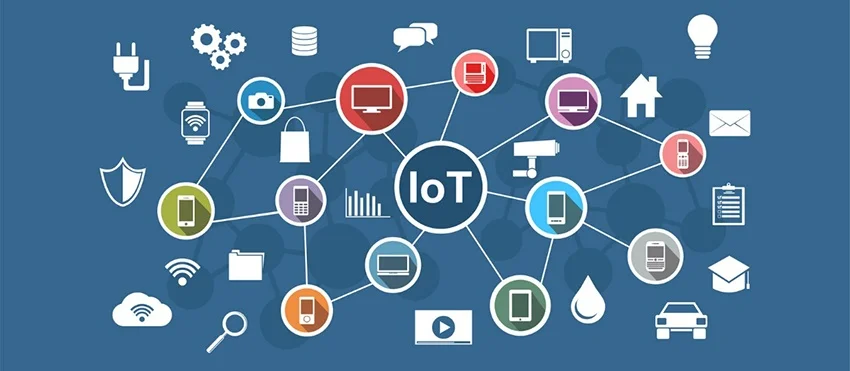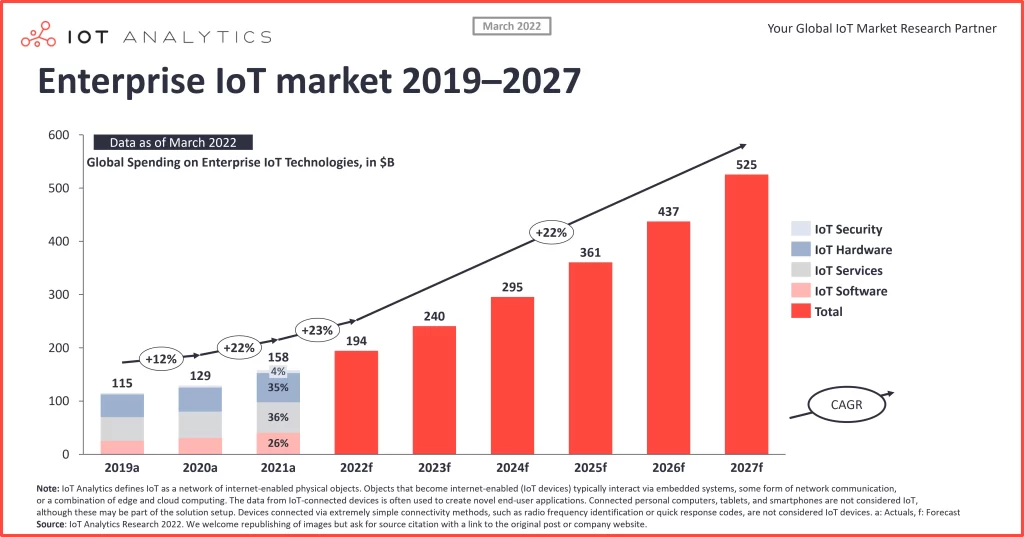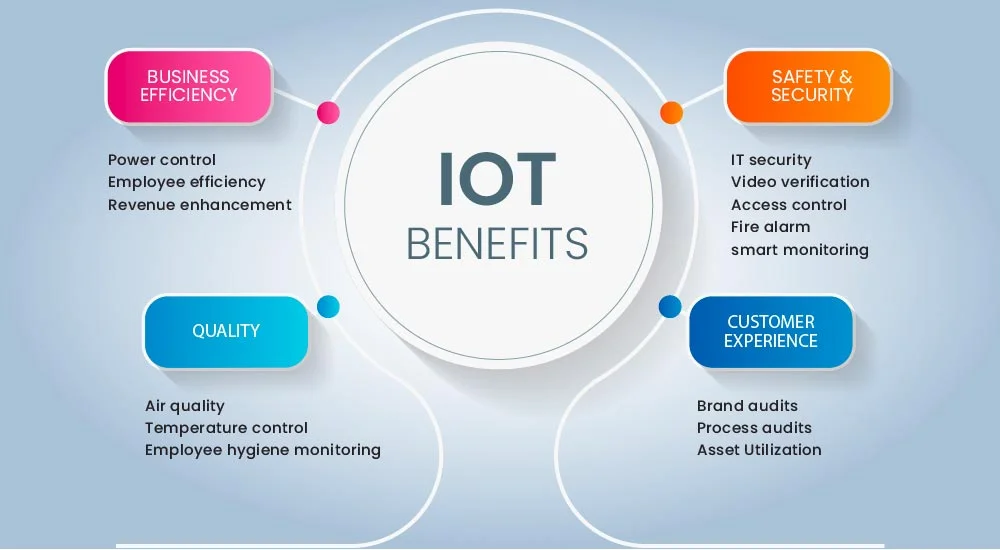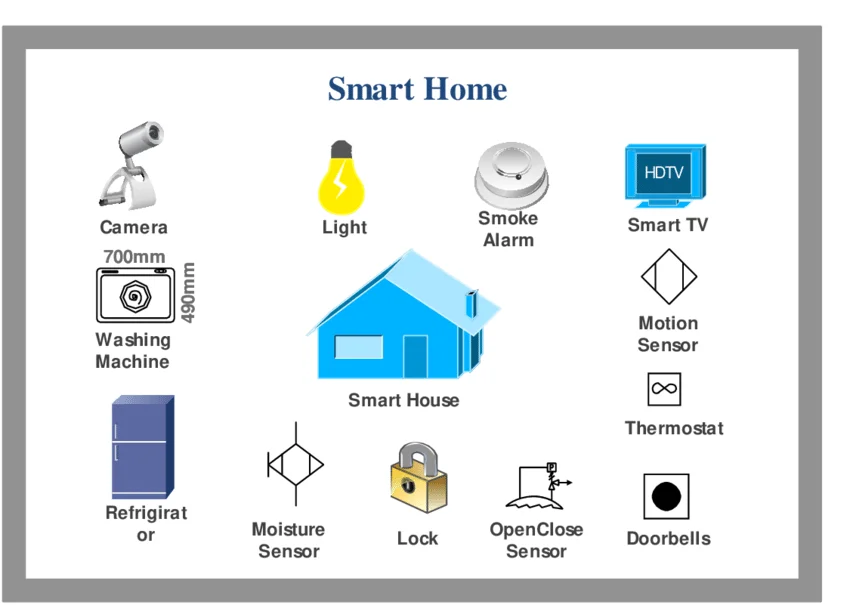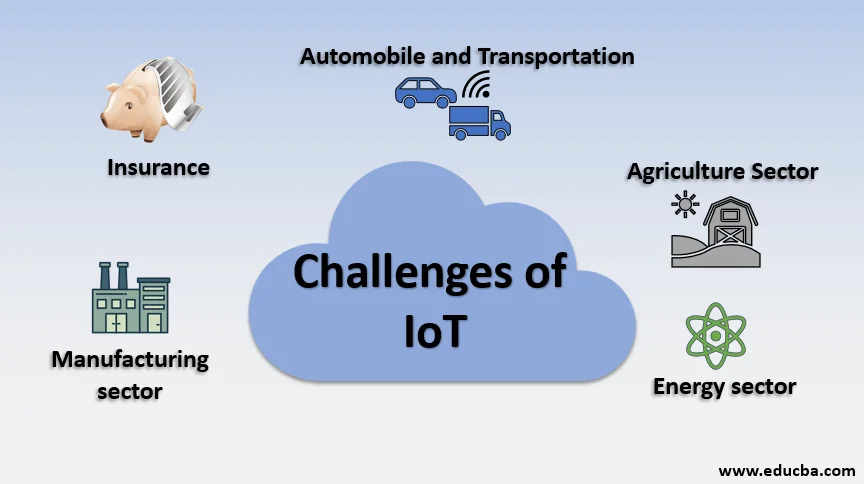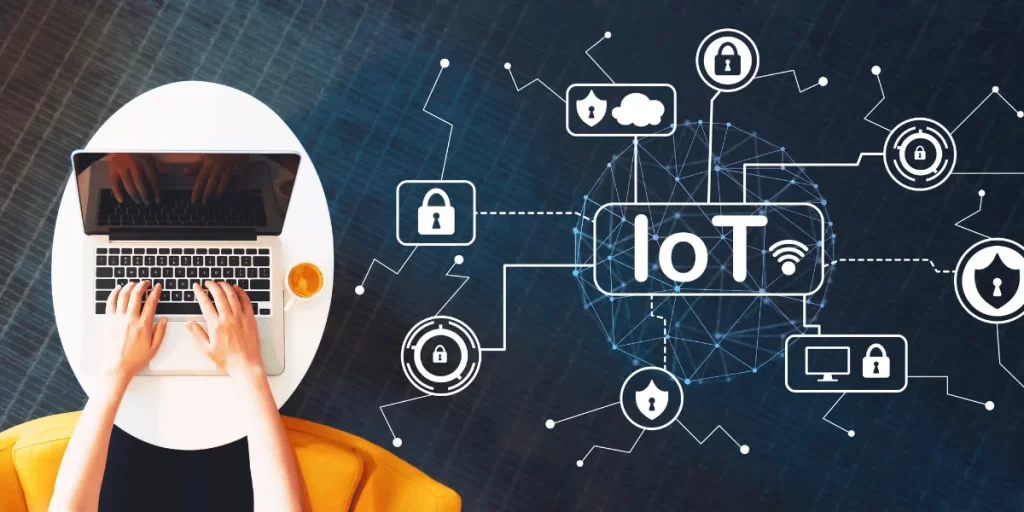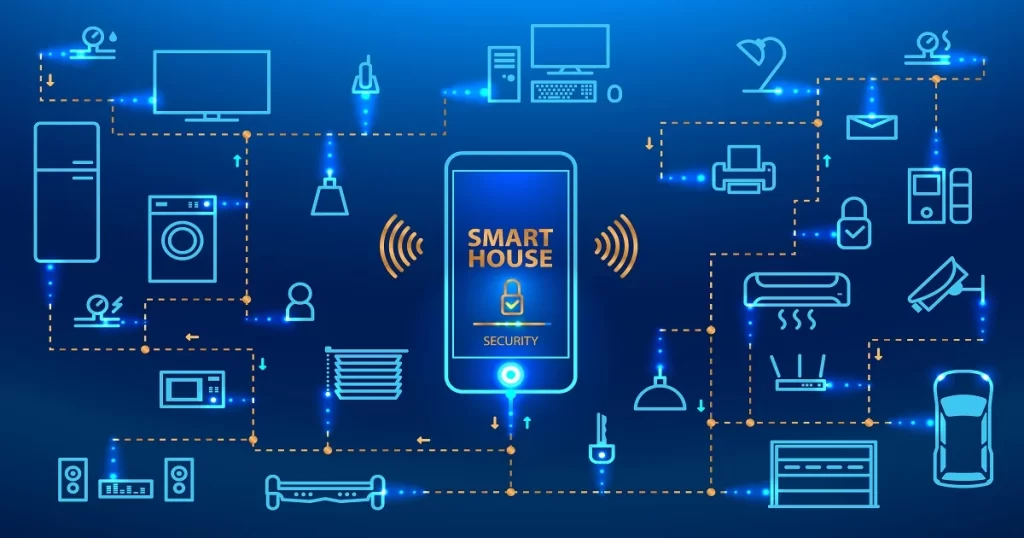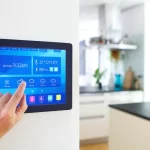The concept of the Internet of Things (IoT) has rapidly gained momentum over the past few years, revolutionizing various aspects of our lives. From industrial applications to healthcare and transportation, IoT has demonstrated its potential to enhance efficiency and convenience. However, one area where IoT has particularly shown promise is in transforming our living spaces into smart, interconnected environments. In this article, we will explore the power of IoT in homes, its benefits, challenges, and how you can leverage it to create a more convenient and efficient living space.
Outline
- Introduction to IoT
- Benefits of IoT in the Home
- IoT Devices for Home Use
- Integrating IoT Devices
- Overcoming IoT Challenges
- Making Your Home IoT-ready
- Enhancing Daily Life with IoT
- The Future of IoT in Homes
- Potential Risks of IoT
- Conclusion
Introduction to IoT
IoT stands for the “Internet of Things.” It refers to a network of interconnected physical devices or “things” that are embedded with sensors, software, and other technologies, enabling them to collect and exchange data over the internet. These devices can range from everyday objects like home appliances, wearable devices, and smart speakers to industrial machines and infrastructure components.
The core concept behind IoT is to enable these devices to communicate with each other and with central systems or cloud platforms. This interconnectedness allows for data sharing, remote monitoring, and control, leading to improved efficiency, automation, and enhanced user experiences. IoT has the potential to revolutionize various industries, including home automation, healthcare, transportation, agriculture, and manufacturing, among others, by introducing new levels of connectivity and intelligence to the physical world.
The growth of IoT in recent years
The growth of IoT in recent years has been nothing short of remarkable. The increasing adoption of smart devices, advancements in sensor technology, and the proliferation of internet connectivity have all contributed to the rapid expansion of the IoT ecosystem. Below are some key factors that highlight the substantial growth of IoT:
Widespread Adoption of Smart Devices: The popularity of smart devices such as smartphones, smart speakers, and wearable gadgets has laid the foundation for IoT growth. These devices serve as gateways for users to connect and interact with various IoT applications and services.
Connectivity and Bandwidth Improvements: The availability of high-speed internet connectivity and the deployment of 5G networks have significantly improved data transmission capabilities. This enables seamless communication between IoT devices and facilitates real-time data exchange.
Advancements in Sensor Technology: IoT devices rely on various sensors to collect data from the physical environment. Technological advancements in sensor miniaturization, efficiency, and accuracy have made it easier to integrate IoT capabilities into a wide range of objects and systems.
Increased Cloud Computing and Data Storage: Cloud computing has become more accessible and affordable, providing a scalable and cost-effective platform for storing and processing the vast amounts of data generated by IoT devices.
Expansion of Industry Applications: IoT has found applications across diverse industries, including healthcare, agriculture, transportation, manufacturing, energy, and smart cities. This wide adoption has accelerated IoT growth in both consumer and industrial sectors.
As IoT technology continues to mature and find new applications, it is expected to play an even more significant role in shaping the future of technology and the way we interact with the world around us.
Benefits of IoT in the Home
The integration of IoT devices in homes offers numerous advantages, making our lives easier and more enjoyable.
Smart Home Automation
One of the primary benefits of IoT is the ability to automate various tasks in the home. Smart home automation allows you to control devices and appliances remotely, making daily routines more efficient. For instance, you can schedule your smart thermostat to adjust the temperature before you arrive home or set your coffee maker to start brewing in the morning automatically.
Energy Efficiency and Cost-saving
IoT devices enable energy-efficient practices, leading to reduced energy consumption and cost-saving. Smart lighting systems can automatically adjust brightness based on natural light availability, and smart thermostats can optimize heating and cooling patterns to minimize energy wastage.
Enhanced Security and Safety
Home security is enhanced through IoT-powered smart security cameras and sensors. You can monitor your home remotely and receive real-time alerts in case of any unusual activity. Additionally, IoT-enabled smoke detectors and leak sensors can quickly notify you in emergencies, preventing potential disasters.
IoT Devices for Home Use
A wide range of IoT devices is available for home use, each catering to different needs and preferences.
Smart Speakers and Voice Assistants
Smart speakers, equipped with voice assistants like Alexa or Google Assistant, provide a central hub for controlling various IoT devices with voice commands. You can ask for weather updates, play music, set reminders, or control smart home appliances just by speaking.
Smart Thermostats
Smart thermostats offer precise temperature control and learning capabilities. They can analyze your heating and cooling preferences, optimizing settings to ensure comfort while saving energy.
Smart Lighting Systems
IoT-enabled smart lighting systems allow you to control the brightness, color, and scheduling of lights using your smartphone or voice commands. This adds convenience and energy efficiency to your home.
Smart Security Cameras
Smart security cameras offer advanced features like motion detection, night vision, and cloud storage for footage. These cameras provide peace of mind by keeping an eye on your home even when you’re away.
Integrating IoT Devices
To make the most of your IoT devices, seamless integration and communication between them are crucial.
Interconnectivity and Communication Protocols
IoT devices use different communication protocols like Wi-Fi, Bluetooth, Zigbee, or Z-Wave. Ensuring that these protocols are compatible and can communicate effectively is essential for creating a cohesive smart home ecosystem.
Centralized Control Through Mobile Apps
Many IoT devices come with dedicated mobile apps that allow centralized control. These apps serve as a unified interface, enabling users to manage all their smart devices from a single platform.
Overcoming IoT Challenges
While IoT offers numerous benefits, it also presents certain challenges that need to be addressed.
Data Security and Privacy Concerns
The interconnected nature of IoT raises concerns about data security and privacy. With multiple devices collecting and exchanging data, ensuring the protection of sensitive information becomes paramount.
Compatibility and Standardization Issues
As the IoT market expands, various manufacturers develop their devices using different technologies. This fragmentation can result in compatibility issues between devices from different brands and hinder seamless integration.
Making Your Home IoT-ready
Before diving into the world of IoT, there are some steps you can take to ensure your home is IoT-ready.
Reliable Internet Connection
A stable and reliable internet connection is fundamental for a smooth IoT experience. Ensure that your home network can handle the increased data flow from multiple connected devices.
Ensuring Wi-Fi Coverage
IoT devices rely on Wi-Fi connectivity, so it’s crucial to have adequate Wi-Fi coverage throughout your home. You may need to invest in Wi-Fi range extenders to eliminate dead zones.
Device Compatibility and Requirements
Before purchasing IoT devices, check for compatibility with your existing infrastructure and ensure that your smartphone or tablet meets the minimum system requirements to run the necessary apps.
Enhancing Daily Life with IoT
With IoT devices integrated into your home, you can create scenarios that enhance your daily life.
Home Automation Scenarios
Create automation scenarios that suit your lifestyle. For example, you can set up an “Away” scenario that turns off lights, lowers the thermostat, and activates security cameras when you leave home.
Voice-controlled Tasks
Take advantage of voice assistants to control IoT devices with ease. From adjusting the lighting to playing your favorite music, voice commands simplify daily tasks.
Remote Monitoring and Control
Monitor and control your home remotely through your smartphone. Check security camera feeds, adjust the thermostat, or turn off appliances even when you’re away.
The Future of IoT in Homes
As technology continues to advance, the future of IoT in homes looks promising.
Advancements in Technology
IoT devices are becoming more sophisticated and feature-rich. Advancements in sensor technology, AI, and machine learning will further enhance the capabilities of smart devices.
Integration with AI and Machine Learning
The integration of AI and machine learning will enable IoT devices to learn from user behavior, predicting preferences and adjusting settings automatically.
Potential Risks of IoT
While IoT offers incredible potential, it’s essential to be aware of the risks it may pose.
Cybersecurity Threats
With increased connectivity, IoT devices become potential targets for cyber attacks. Manufacturers and users must prioritize cybersecurity measures to safeguard against breaches.
Dependency on Technology
As homes become more reliant on IoT, there may be concerns about over-dependency on technology and potential disruptions if systems fail.
Conclusion
Embracing the power
of IoT in your home can revolutionize your daily life, offering convenience, energy efficiency, and enhanced security. By integrating smart devices and leveraging automation, you can create a truly connected living space that simplifies tasks and enhances comfort. However, it is crucial to remain vigilant about data security and compatibility issues. With the continuous advancement of IoT technology, the future holds even more exciting possibilities for creating smarter homes.
FAQs
Can I control IoT devices without an internet connection?
While some IoT devices can operate locally, many require an internet connection for full functionality and remote control.
Do all smart devices work with any voice assistant?
Not all smart devices are compatible with every voice assistant. Ensure that your devices are compatible with the voice assistant you prefer to use.
What are some common security measures for IoT devices?
Common security measures include regular firmware updates, strong passwords, and enabling two-factor authentication.
Are there any privacy concerns with IoT devices?
Yes, privacy concerns exist due to data collection. Always review the privacy policy of IoT devices and choose reputable manufacturers.
Can IoT devices save energy and reduce utility bills significantly?
Yes, IoT devices like smart thermostats and energy-efficient lighting can lead to substantial energy savings and reduced utility bills over time.


